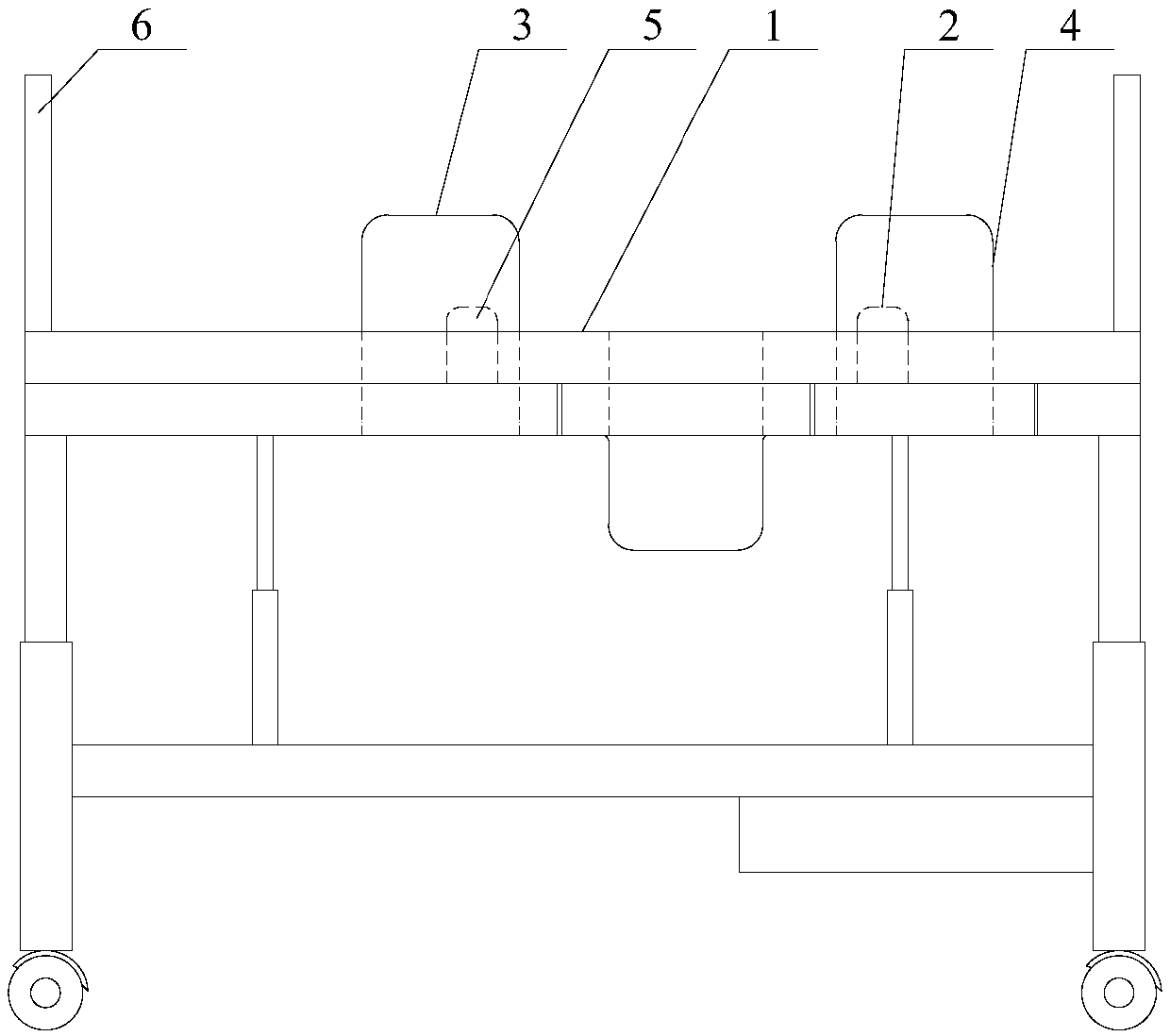Turnover nursing assistive device and nursing bed provided with assistive device
A nursing bed and auxiliary device technology, applied in the field of medical care, can solve problems such as the inability to effectively improve the conditions for the occurrence of bedsores, and achieve the effect of good market application prospects and high adaptability
- Summary
- Abstract
- Description
- Claims
- Application Information
AI Technical Summary
Problems solved by technology
Method used
Image
Examples
Embodiment Construction
[0028] The following will clearly and completely describe the technical solutions in the embodiments of the present invention with reference to the accompanying drawings in the embodiments of the present invention. Obviously, the described embodiments are only some, not all, embodiments of the present invention. Based on the embodiments of the present invention, all other embodiments obtained by persons of ordinary skill in the art without making creative efforts belong to the protection scope of the present invention.
[0029] The core of this embodiment is to provide a turning nursing aid, which includes at least two load-sharing parts, which are respectively arranged on the bed boards inside the limbs on both sides of the human body. The body is turned over to the other side, and the weight of the patient's limbs acts on the inner side of the load sharing part, so as to share the patient's whole body weight, thereby greatly reducing the compression strength of the patient's ...
PUM
 Login to View More
Login to View More Abstract
Description
Claims
Application Information
 Login to View More
Login to View More - R&D
- Intellectual Property
- Life Sciences
- Materials
- Tech Scout
- Unparalleled Data Quality
- Higher Quality Content
- 60% Fewer Hallucinations
Browse by: Latest US Patents, China's latest patents, Technical Efficacy Thesaurus, Application Domain, Technology Topic, Popular Technical Reports.
© 2025 PatSnap. All rights reserved.Legal|Privacy policy|Modern Slavery Act Transparency Statement|Sitemap|About US| Contact US: help@patsnap.com



